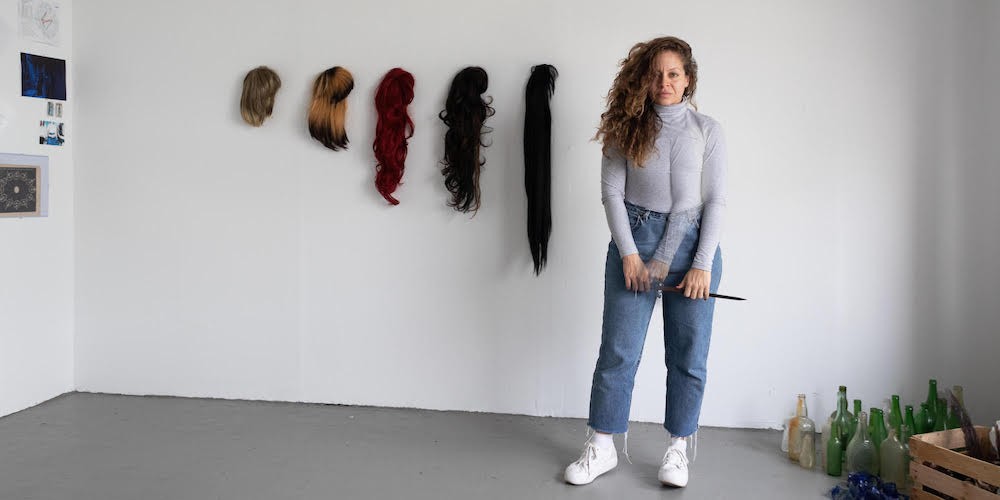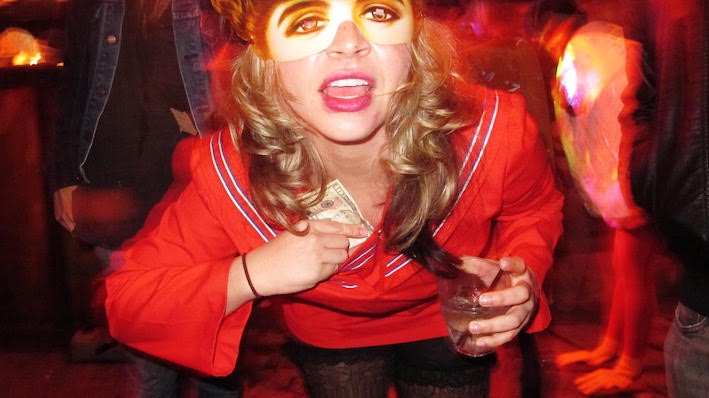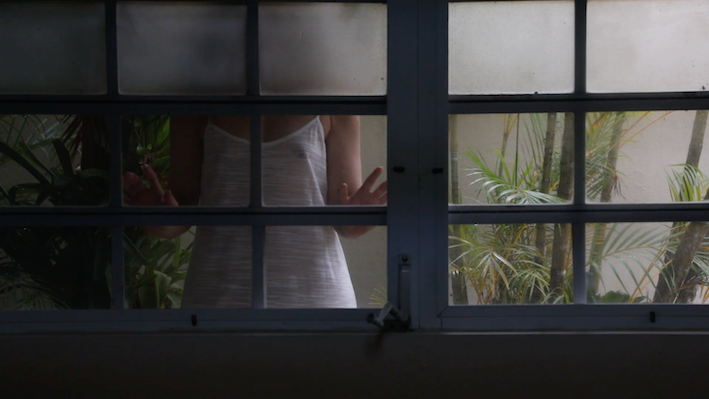Uncovering the Heritage Silhouette: Mónica Félix '20
Uncovering the Heritage Silhouette is a bi-weekly series diving into how tradition influences the creation of art. We interview artists heavily influenced by their heritage.
Mónica Félix ’20 is an interdisciplinary artist, professional photographer and hatha yoga teacher born and raised in Cayey, Puerto Rico. She has a BA in Communications from the University of Puerto Rico, a Photography Certificate from Pratt Institute and is currently finishing her MFA in Visual Arts at Columbia University. Her work is a personal narrative about representation of the experience in migration of one female body, specifically, the colonized, questioned and compromised corners of this traveled life. She continues to search for an honest identity perspective exploring the visual aspects of her experience through photography, video, installation, writing and performance. Her instagram is at @monicafelix.
You’re a photographer who incorporates a lot of culture into your work. How do you define your cultural heritage?
Monica Felix: I am from Puerto Rico, so cultural heritage to me means many things. In Puerto Rico our culture is made up of three main races: the indigenous race (Taíno people), the Spanish and European colonizers, and the African slaves brought by the colonizers. These races make up my cultural heritage.
On your website you describe your work as “a personal narrative about representation of the experience in migration of one female body, specifically, the colonized, questioned and compromised corners of this traveled life.” Tell me about your travels and your journey to Columbia.
MF: Of course, I have now lived in New York for over ten years. I’ve been a professional artist since 2006, but I’ve been an artist for much longer as I wasn’t always doing photography. I did acting for a while. I did a certificate program at Pratt Institute in 2007 and that put me on the path for professional photography. While building my career, I was also building my personal body of work. I came to New York to pursue that and after a while I decided that I wanted more community around me. I wanted to be surrounded by artists who were also working to be involved in more conversation. That is why I came to Columbia.
I also want to hear about the “colonization” aspect.
MF: I don’t want to give a history lesson to anyone about the colonization of Puerto Rico, as I feel that is not my job. My personal experience growing up in Puerto Rico though was viewing everything at the same level. You are Puerto Rican, you have Puerto Rican heritage, you live in a Puerto Rican community. But at the same time you go knowing that your nation is also a part of another nation that has a tight grasp on the future and the resources, the economic situation of where you are. There was always a half sense of fulfillment and another half of knowing that you are limited in a way.
Do you think your cultural traditions were lost though all these years and/or the physical movement to different geographical locations?
MF: I was very fortunate to have moved to New York during one of the many waves of young Puerto Ricans immigrants looking for success outside of the homeland. I was able to easily maintain a sense of community and I would argue that I talk more about being Puerto Rican now. I feel closer to my origins since I’m often seeking the company of other Puerto Ricans.
This reminds me of your series Desenfreno, which documents social gatherings of the recent young Puerto Ricans migrating to New York City. This was back in 2016 and I wanted to hear about this project. The photos are fiery, vivid, yet intentionally unfocused.
MF: Yes, this was a series of parties hosted by young Puerto Rican people. It was a meeting point for a lot of us at that time, just for them to enjoy their youth, their complexities, and the weather. The weather affects us Puerto Ricans a lot, it is very difficult. Most of us don’t like living in very cold places in the United States. This was actually a series of Halloween parties, when the weather was getting cold. People were just squaring to have fun. I have others that I haven’t put out, but it is just a bunch of party photos.
I also wanted to talk about landscapes. I saw that you took photos for Hogar Nueva Mujer, which is about a women’s shelter providing support after Hurricane María in 2017. How did this natural disaster affect your art and/or the halt or push for photography. First, were you in Puerto Rico with family at that time or in America?
MF: This was during my first year exhibition show, the night of the hurricane I was here in New York by myself. It was pretty intense, I couldn’t reach my mother back in Puerto Rico for a while. It was an experience a lot of Puerto Ricans in New York went through. After the Hurricane I went down to be with my family in Puerto Rico and I decided to take my camera. There was a specific women's shelter in my hometown and I decided to take portraits of everything that was happening, as they were putting a lot out and they needed help. I took those photos and knew I wanted to publicize them. Art making for me is always an outlet or making sense of things that don’t.
Speaking of your mother, in an earlier project, Reina, you highlight your relationship and things you learned from her. How did this project start?
MF: This was a while ago and in all honesty it probably started from a fight with my mom. It was a reflection of the place one has as a daughter through customs and experiences.
One particular thing I remembered was my mom’s skin care routine, anything that is about how one should look and preserve. My mom has an extensive skincare routine, it’s very vain. The vanity of being female. There is a lot of ice in the images, there was an ice bath which is always good for your skin. It’s like the mythology behind that also.
I did notice that many artifacts in the photos were beauty related. Why did you start to incorporate yourself into your photography?
MF: Literally body preservation. This happened mainly from self reflection. When I moved to New York in 2017 I started doing photographs of myself in my surroundings of where I was and my everyday, to show family and friends back home. I wanted to give everyone a visual of me, so that I would be thought about and not forgotten. That is how the practice of self photography started, and it evolved and became more intricate with things that I was doing at the time. It was a lot of sense making for myself with my own life events also. I was searching for a way to describe things, such as the scenes in my head and things that I felt but couldn’t describe.
Would you say that you are between two lands, Puerto Rico and New York? And if so, who would say your ideal audience is?
MF: Yes I travel back and forth a lot. It is important for me to always document my current self. Puerto Rico is my scenario and my first home. It also depends on the day though. Some days I feel like a city rat, but most days I want to be in Puerto Rico.
For my audience, it’s anyone who has a relationship or can understand otherness and migration. It is a very wide idea, but a lot of it has to do with the reason I started doing art. I want to connect with other people who might be feeling what I’m feeling too. It is an attempt to reach out and feel the reassurance that I’m not alone.
And also those who cannot understand, can become a different audience that can try to get something out of my art. That would be amazing if everyone could take something. More and more these emotions are becoming more universal as we live in a globalized time. The internet is our country!
What are some of your favorite places to shoot?
MF: I think everywhere is beautiful! Rather than a place, I would just encourage if anyone wants to take photos in any general place, follow the light! Just observe light and then know your instrument. Know your camera and know what it is to photograph. I think the key is to practice every day, practice what you would like to capture.
Do you have a current favorite camera?
MF: I truly don’t have any favorites! I mostly shoot with DSLRs— all Canon—as that was what I started using when getting into photography. I’m very much into tech and camera gear, but most of all I prefer the tools serving the work. So with whatever project I might be thinking about I will change the gear, as I have many other cameras with different textures and resolutions. I’m not married to anything.
Any tips for amateur photographers? Or any incoming students?
MF: I would say to talk to as many people as you can, community build! The program just brings you these people to meet, whether in your studio or to go meet them in a talk. Try to connect as much as you can! And on Zoom now, bug people! Email them and know it can happen.
What are you working on now? Anything we can look forward to?
MF: I just finished an exhibition and I am going to start working on my thesis exhibition for Columbia again, which will be sometime next year. It will be on the migration, fairytale narrative of one body, exploring the corners of experience. The same things I’ve already been working on, but I’m really excited to see the finished work and also the works of all of my cohort. We have all lived through this pandemic together and it was such a big disappointment when it was cancelled but now I’m more excited as everyone has started adding more. We’re all going wild with so much exciting stuff!




